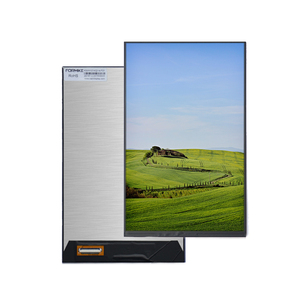
All categories
Featured selections
Trade Assurance
Buyer Central
Help Center
Get the app
Become a supplier

(1396 products available)




















































The HDMI touchscreen display offers good adaptability and easy usage. The Touchscreen Overlay allows users to interact with the Raspberry Pi directly through the screen, creating a more instinctive experience. These displays are perfect for projects that require user interaction, such as kiosks, digital signage, or homemade gadgets.
The MIPI DSI (Mobile Industry Processor Interface Display Serial Interface) display gives a high-quality visual output. MIPI DSI screens are preferred for their high resolution and minimal power usage, making them ideal for projects where picture quality is extremely important but power supply may be limited. They are typically used in advanced projects involving images, intricate user interfaces, and multimedia applications.
As for the wireless display, it enables ease when connecting as there is no need for HDMI or other wired connections to set the scene. These displays are perfect for projects where mobility means a lot, or the Pi has to be integrated into a device that cannot support a wired connection for the screen. A wireless display can be useful in Raspberry Pi-based cameras, portable computers, and digital art frames.
As such, the HDMI non-touchscreen display is a type of display that is easy to attach through HDMI. Since these displays are fairly basic in nature, they are most useful in situations when touch capability is unnecessary, and good visual representation is still required. They are generally used in systems like desktop displays, data screens, and digital signage where interaction with the end-user is not important.
A 10 inch raspberry pi display acts as an interface between the Raspberry Pi and the user, allowing for visual output. The screen visualizes what the Raspberry Pi is computing, making it easy to control and communicate with the system. Most 10-inch displays provide decent resolution, good picture quality, and compatibility with various Raspberry Pi models. They connect via HDMI, MIPI DSI, or wireless protocols depending on the type of display.
Moreover, some models also have a touchscreen function, making it possible to provide input directly through the screen, which is useful for a lot of interactive applications. Touchscreen displays can detect finger inputs, enabling users to control the device by tapping, swiping, and other gestures.
The design of the 10 raspberry pi screen is important in determining how well it performs with the Raspberry Pi and how good it looks in the space where it will be used. Touchscreen displays usually have glass overlays that give a modern look and a smooth feel. Thin bezels make for a more elegant and compact appearance, while thicker bezels are found on more robust displays meant for heavy-duty use.
Displays with VESA mounts provide extra convenience for users who prefer a fixed position of the display since such displays can be easily mounted onto arms or stands. In terms of color, two general colors are offered, black and white, to fit the user's need and preferences.
When buying a 10-inch Raspberry Pi display, various factors have to be considered to ensure compatibility and performance. Initially, the display's resolution is critical since a higher resolution provides a clearer and sharper picture. In addition, touchscreen functionality must also be considered, as touchscreen displays are ideal for activities that need more user interaction.
Connection type matters, too: HDMI displays are great for simple plug-and-play setups, while MIPI DSI displays fulfill advanced needs in performance. Next, check whether the screen has features like adjustable brightness or built-in speakers, which could enhance the display experience. Last but not least, the display's design and portability are also important for selecting a display that looks good and fits in the space constrained for mobile projects.
The 10-inch Raspberry Pi display is versatile for various DIY electronic projects. In portable computing, it serves as a compact screen for a mobile Raspberry Pi-powered laptop, providing a balance between size and usability. Users can create digital photo frames or interactive displays by integrating it with image boards.
In a home automation system, the display can be a control panel for monitoring and managing smart home devices. It is a key component in car infotainment systems, providing entertainment and navigation features. Users can build their own gaming consoles or emulators by connecting the display to Raspberry Pi for retro gaming.
Lastly, with its touchscreen capability, it enables direct user interaction for many projects, making it ideal for DIY enthusiasts to engineer and construct various endeavors.
Most 10-inch Raspberry Pi displays come with a touchscreen feature, which allows users to interact with their projects directly through the screen. This is especially ideal for those projects where user interaction is important.
These displays connect through various means, with the most common being HDMI and MIPI DSI. MIPI DSI displays are more performance-oriented because they offer better resolution with a more efficient power draw.
These displays are suitable for such projects since they offer a good balance of size and usability. They are used in portable computers, car infotainment systems, and mobile gaming consoles.
Yes, it is possible to use a 10-inch Raspberry Pi display in home automation projects. The display acts as a control panel, enabling users to monitor and control various smart home devices efficiently.
These displays are usually of high quality and offer good resolutions such as 1080p. A good resolution is required for any use, such as multimedia presentations, video playback, and game rendering.